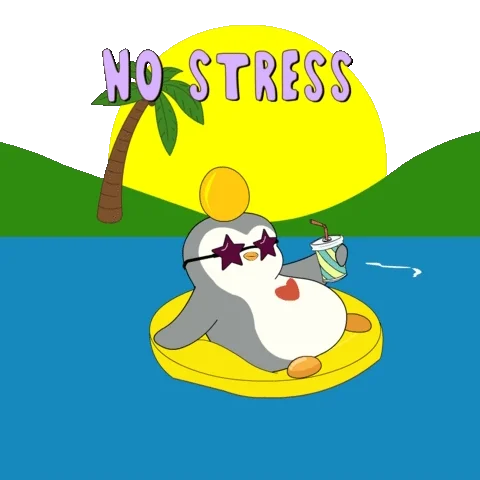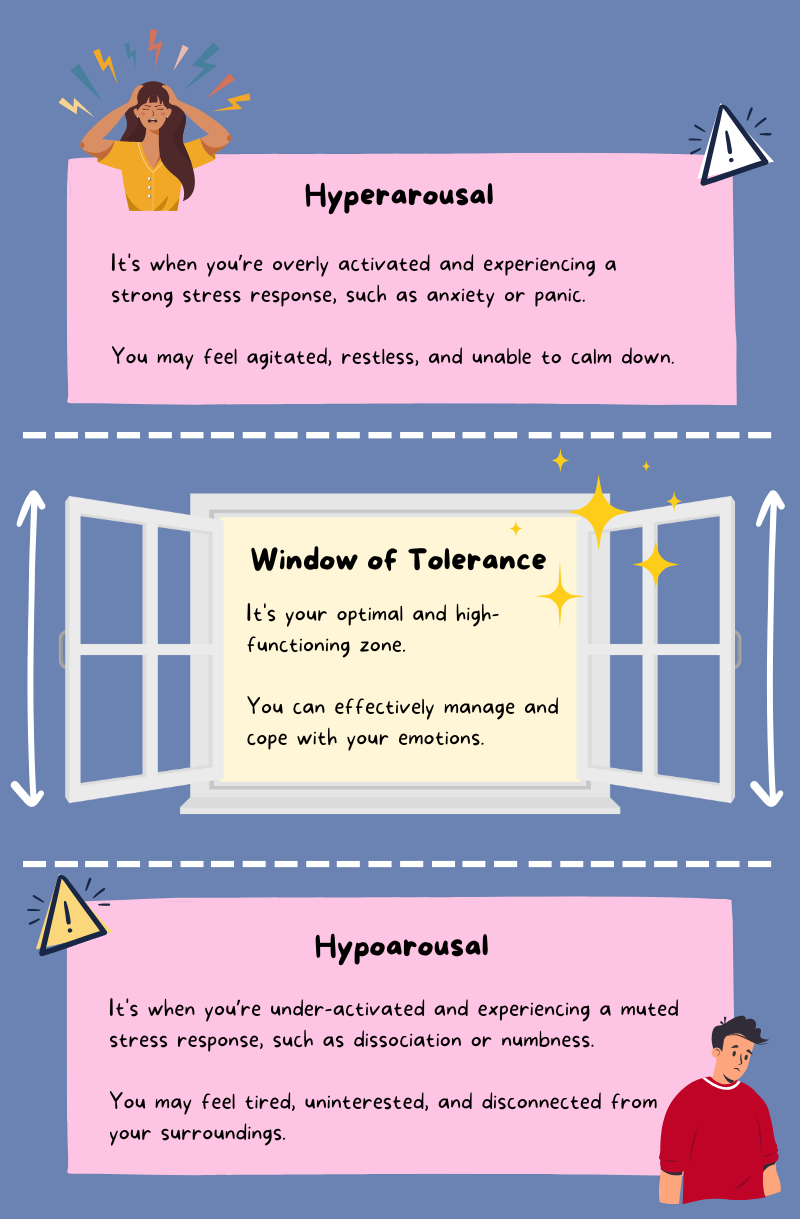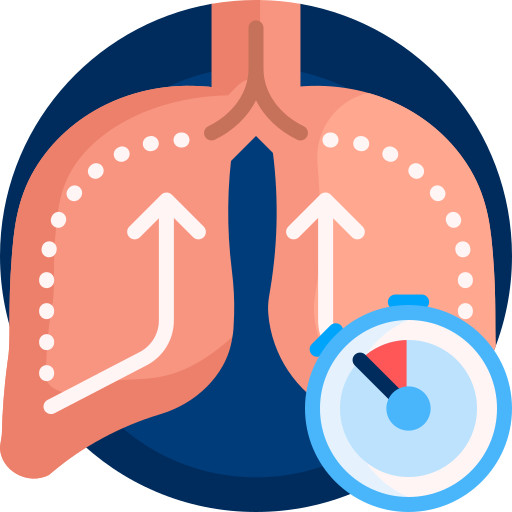
This logo isn't an ad or affiliate link. It's an organization that shares in our mission, and empowered the authors to share their insights in Byte form.
Rumie vets Bytes for compliance with our
Standards.
The organization is responsible for the completeness and reliability of the content.
Learn more
about how Rumie works with partners.
Have you ever felt overwhelmed or stuck in a state of emotional distress?
Perhaps you felt like your emotions were spinning out of control and you didn't know how to regain a sense of calm?

Whether you're dealing with a difficult situation at work or navigating a challenging personal relationship, having the strategies to manage your window of tolerance (WOT) can help you:
regulate your emotions
reduce stress and anxiety
improve your overall well-being

But What Is the Window of Tolerance (WOT)?
Tip #1: Identify Your Window of Tolerance
Before you can regulate your emotions and body, it's important to know your window of tolerance (WOT) so you can tell when you're overwhelmed or underwhelmed and take necessary actions.
Notice your physical sensations
Establish a baseline for what it feels like to be within your WOT. Pay attention to your body in a calm and relaxed state and take note of physical sensations like relaxed muscles, normal breathing patterns, and a steady heartbeat.

Observe your thoughts and emotions
Find the indication that you're moving beyond your WOT. Pay attention to your thoughts and emotions during times of stress. You may notice patterns such as racing thoughts or intense feelings of anxiety or anger.
Think about situations or events that push you beyond your WOT, such as conflict, deadlines, or unexpected changes.

Tip #2: Address Your Triggers
Develop coping strategies
Find the strategy that works well for you. It may be practicing mindfulness, deep breathing, taking a break, or going for a walk.
Set boundaries
If certain people or situations consistently trigger you, you should consider setting boundaries to protect your emotional wellbeing. Types of boundaries include physical, sexual, intellectual, emotional, and financial. You could limit your exposure to these triggers or express your needs to the people involved.

To better manage triggers and build resilience, you could reach out to your trusted friends, family, or mental health professionals for help.

Tip #3: Practice Self-Care
It’s crucial to take care of your body and mind to manage your window of tolerance (WOT). This can include:
Ensuring adequate sleep.
Consuming a healthy diet.
Staying hydrated.
Regularly engaging in physical activity.
Prioritize activities that promote emotional well-being and make you feel good.

Tip #4: Bring Yourself Back From Hyperarousal
Tip #5: Bring Yourself Back From Hypoarousal

Engage in cognitive activities, such as puzzles or reading, to stimulate your mind and increase alertness.
Meet Mark

Mark’s boss called him into his office and pointed out mistakes in his work. He had been working tirelessly on the project and he didn’t expect all the negative comments.
He needs to make changes to the project and the deadline is the next day. However, he is struggling to keep himself composed as his mind races with thoughts of failure and disappointment.
Mark needs to regain a sense of calm. What could he do?
A: Do some breathing and stretching exercises.
B: Relax after making the changes to his project.
C: Take a slow walk and get some fresh air outside.
D: Reach out to someone he can trust for support.
Quiz
What could Mark do? Select all that apply:
If Mark doesn't bring himself back from hyperarousal, he may experience negative consequences that could impact his ability to complete the project successfully, such as difficulty concentrating, irritability, and feelings of anxiety. Additionally, if Mark doesn't take steps to manage his hyperarousal, it could lead to longer-term mental health issues such as anxiety or depression. This could have negative consequences on his overall well-being and ability to function effectively in both his personal and professional life.
Take Action
Everyone's journey is different, so it's important to experiment with different strategies and find what works best for managing your window of tolerance (WOT).
Be patient and compassionate with yourself during this process.

This Byte has been authored by
Melissa Tan
Learning Designer







